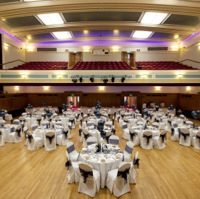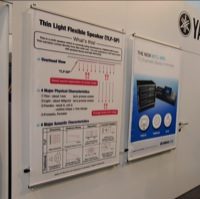
With a wide array of networking protocols it can be difficult for the average AV integrator to keep abreast of developments, but Nicola Beretta, product manager at Allen & Heath, believes the set of skills and professionalism required by integrators, contractors and installers has been expanding in recent years.
“There used to be the audio (read analogue) guy and the IT/networking expert among others, nowadays the two things are inextricable and often facets of the same profession,” he explains. “While supporting and advising on a number of installations around the globe I have found this new breed of ‘audio networking specialists’ to be competent despite ever-changing protocols and specifications. The average church in North America typically runs multiple protocols on a VLAN Ethernet infrastructure and we often find out once the system is already up and running – this was the case with the Harvest Family Church in Missisauga where integrator John Adams has linked several iLive systems and third party devices using a combination of our ACE protocol, ADAT, Aviom, AES-EBU, and PL-Anet for control.
The debate between open and proprietary systems continues, but the two can coexist in an installation, he states. “Proprietary is not a synonym of extra cost anymore, but sometimes still means extra value – this can take the form of add-on features, or an ecosystem of supported software and drivers. Take our own ACE (Audio and Control over Ethernet) or dSNAKE protocols for example – because they were developed in house they are fit for purpose, cost effective and ideal for simple point-to-point connections between iLive or GLD systems. dSNAKE auto discovers digital stageboxes without the need of IP addresses and automatically updates the firmware of the remote units to match the software version on the mixer, whereas ACE allows easy tunnelling of third party Ethernet data. Both have extremely low latency (around 100us) compared to the typical latency of higher-layer standards.”
“Proprietary or not, different protocols tend to be backed up by different manufacturers, often through partnerships or alliances. The mix of brands and products supporting Cobranet in the 90s was key to its adoption by installers and contractors, similarly Ravenna is getting a lot of attention from the broadcast industry. Standards come and go and they do so with significant overlap – widespread AES3 and ADAT were first introduced in the mid 80s / early 90s respectively!”
Total multi-vendor plug-and-play interoperability remains a major goal, but how close are we to this?
“Arguably the biggest step in this direction is the AES67 initiative which builds on the AVB set of standards with the ultimate goal of cross-vendor interoperability. Dante and other IP-based technologies are bound to get AES67 support in the future and the audio community is looking at this new scenario with anticipation.”







